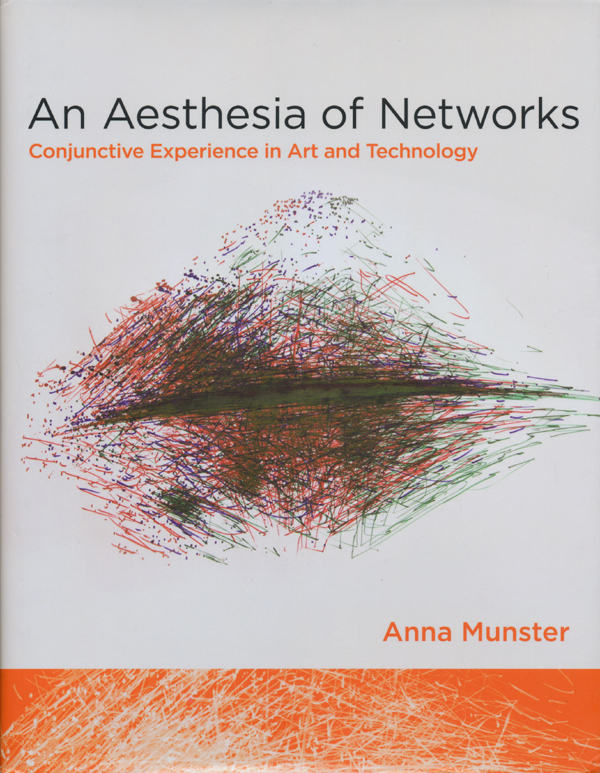
An Aesthesia of Networks (2013) Anna Munster
Munster’s work examines the role of networks play in our contemporary society. Munster attempts to explore not only the technical nature of the network but also its metaphorical popularity in articulating the complexity of our technological mediated society. She focuses on the philosophical work of Foucault, Guattari, and William James as a way to tease out the implications of the network in explaining notions of perception, communication, and interactions. She frames her analysis through artistic practice and compares and discusses technological innovations deployed by digital and net artists over the past twenty five years.
Munster focuses on the conception of the network in its different iterations. The early part of the book traces the emergence of the network as cartographic device that was key to RAND corporation of the 1960s and the communication apparatus of the US military. The nodes and relational topologies that were mapped provided a powerful conceptual tool that could be mapped across a host of technological and sociological strata. These diagrammatic networks provided the topological design of the future internet. This ‘connectivist’ strategy inherent between relational nodes come to articulate new forms of experience operationalised in the participatory online culture of the web. As analysed in later chapters these diagrammatic forms come to inform and dominate digital networks through their implementation in, for example, Page Rank tools in search engines and Google Earth and the invention of the relational database. She also examines the corelation between the analogies of neural networks and their digital counterparts.
Munster investigates the viral Youtube video and how such tools are appropriated by users and artists that manipulate these tools to generate a “poetics of data undermining”. At their best such artistic practices reinvent or puncture the pervasive corporatisation of the digital tools offering new networks of experience. It is here that she turns to the work of William James and Charles Sanders Pierce on experience and the diagram. This is complemented by more contemporary work on the ‘dispositive’ by Michel Foucault and the ‘refrain’ by Félix Guattari as well as others.
By denoting the ‘aesthetsia’ of the network she calls on a more sustained reflection and critical analysis of the political implications of the network in contemporary media discourse. By considering aesthetics through notions of the network, Munster provides an interesting resource for and AoC that offers a critical analysis of digital technology and our relationship to it.
Mick O’Hara
TU Dublin
Munster, Anna. An Aesthesia of Networks: Conjunctive Experience in Art and Technology. Cambridge: MIT Press, 2013
